Concept UX/UI Design
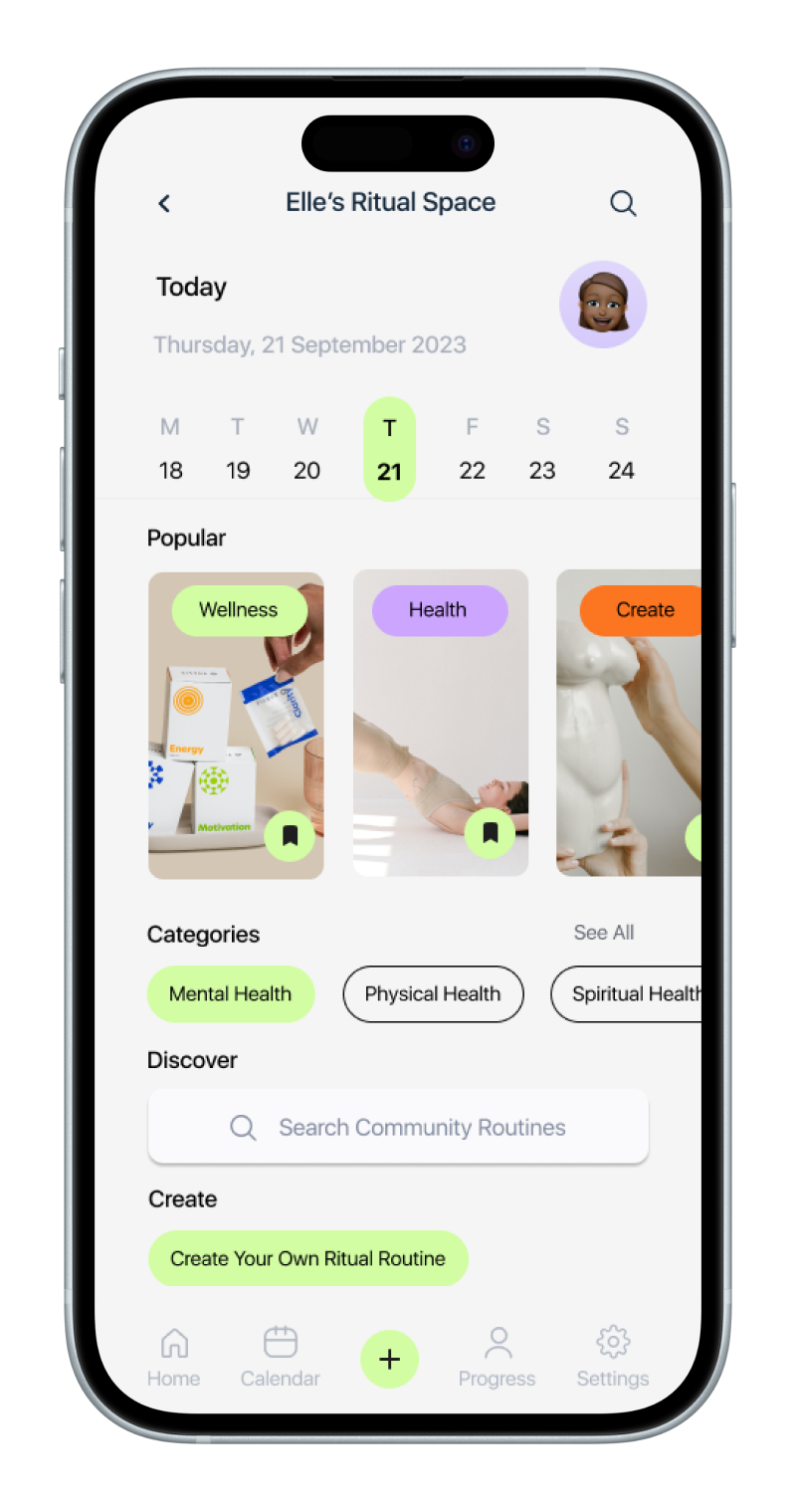
October 2023
User Research
User Testing
Prototyping
UI Design
Sketching
Wireframing
Figma
“In the wake of the pandemic, the link between nurturing healthier habits and flourishing mental health is clear.”
The Centers for Disease Control and Prevention (CDC)
surveyed 18 to 24 years olds with 63% reporting symptoms of anxiety, mood disorders and depression.
A quarter of those surveyed reported turning to substance abuse and a similar number contemplating suicide. These figures underscore the pandemic’s lingering toll on our collective mental health.
In this evolving landscape, young people have the opportunity to understand and create intentional habit systems that last a lifetime, improving their well-being and overall quality of life.
Develop a product design that enables young users to sustainably build long-term habits while understanding barriers to consistent
habit completion.
To begin, semi-structured interviews and a questionnaires were conducted to gain insights into the problem space, target audience, and their habitual behavioural patterns.
The aim was to gain an understanding of how people develop habits, what drives them, how they anticipate obstacles and what motivated them to stay consistent
Key points of enquiry:
Evaluating several aspects of habit-tracking apps, notably ‘Routinery’ and ‘Habit Tracker’, has provided valuable insights into their strengths and areas for improvement:
User Interviews: Capturing participants’ experiences, challenges, and preferences related to habit execution and development.
Affinity Mapping: Analysing data presented within user interviews,
five core themes consistently re-emerged:

Figure 1.0 Affinity Mapping ‘Key Themes’
Neuroscience and psychological studies on habit development yield compelling statistics which informed the define and ideate stage including:
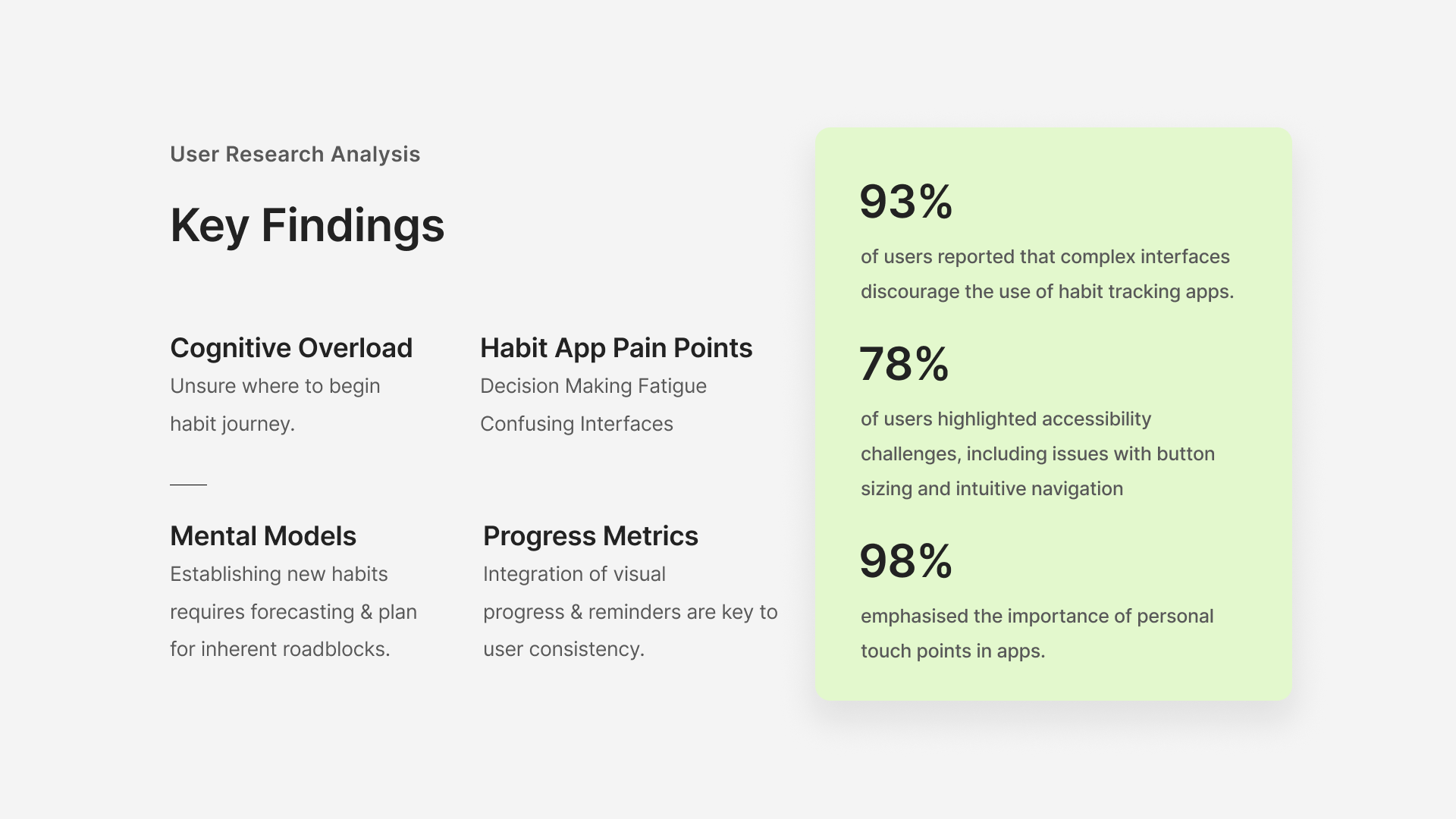
Figure 2.0 ‘User Research Analysis – Key Findings’
User research revealed pivotal insights that guided the ‘Define and Ideate’ stage, including the following prevalent challenges in habit development and consistency
Cognitive Overload: People are often emotionally overwhelmed and constrained by time, impeding their ability to prioritise and establish attainable habit goals. Without defined plans and objectives, these individuals frequently abandon their efforts, discouraged by the lack of clarity.
Failure to Address Barriers & Obstacles Challenges & obstacles are inevitable when trying to establish new habits, therefore it’s crucial to anticipate & plan for potential barriers & develop strategies to overcome them.
Mindset Expectations & Overall Approach Habit formation is gradual, demanding persistent effort. A mindset built on the foundation of self-compassion is crucial for maintaining consistency amid life’s daily pressures.
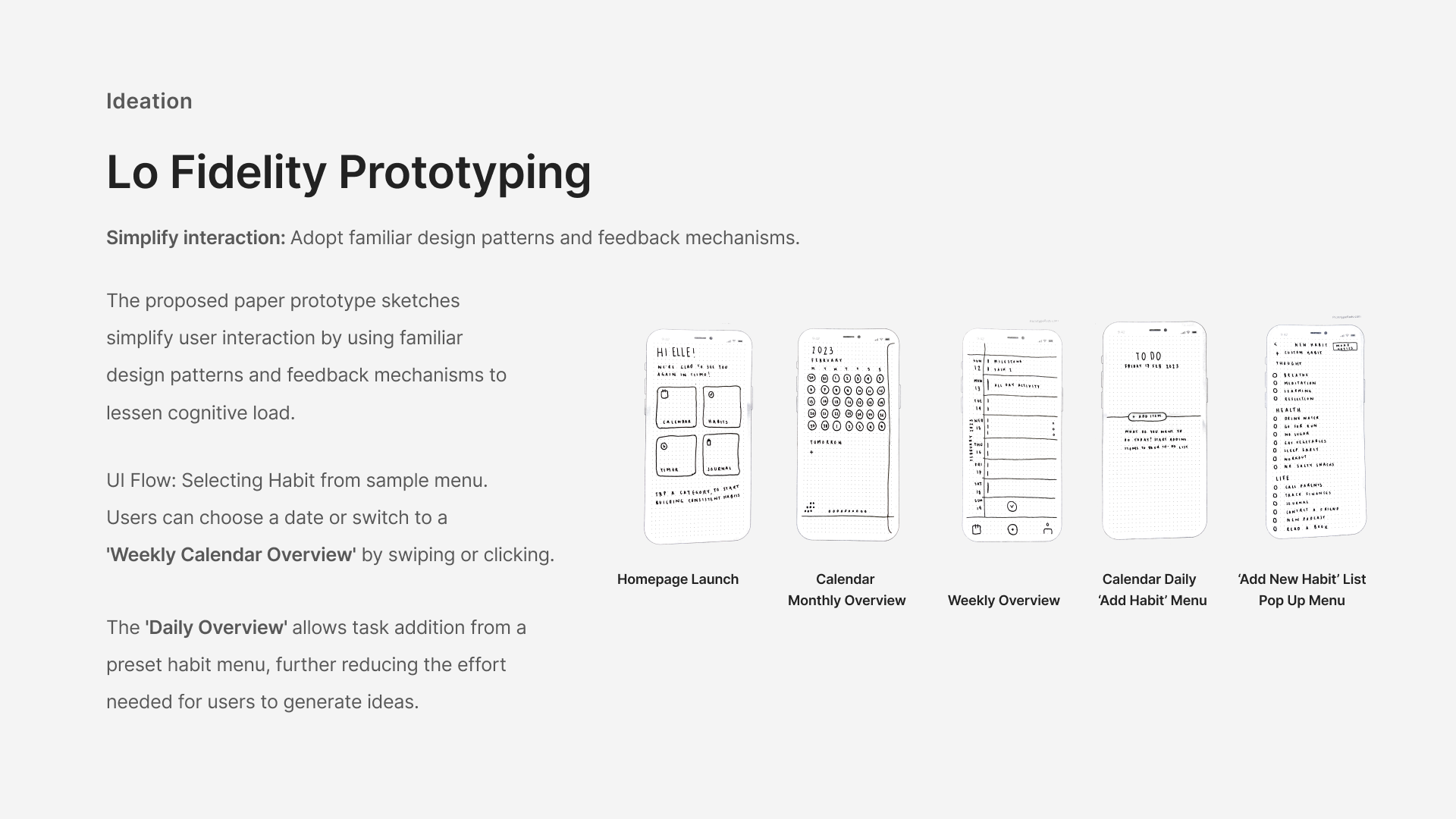
Figure 3.0 ‘Ideation – Lo Fidelity’ Prototyping

Figure 4.0 ‘Ideation – Mid Fidelity’ Feature Exploration

Figure 5.0 ‘User Testing -A & B’ Testing

Figure 6.0 ‘Ideation – How Might We’ Exploration
Re-examining the “How might we” statements and ideation data led to identifying key features that align with the goal of helping young users build and maintain long-term habits:
These features are designed to foster sustainable habit formation and understanding of habit completion barriers for young users.
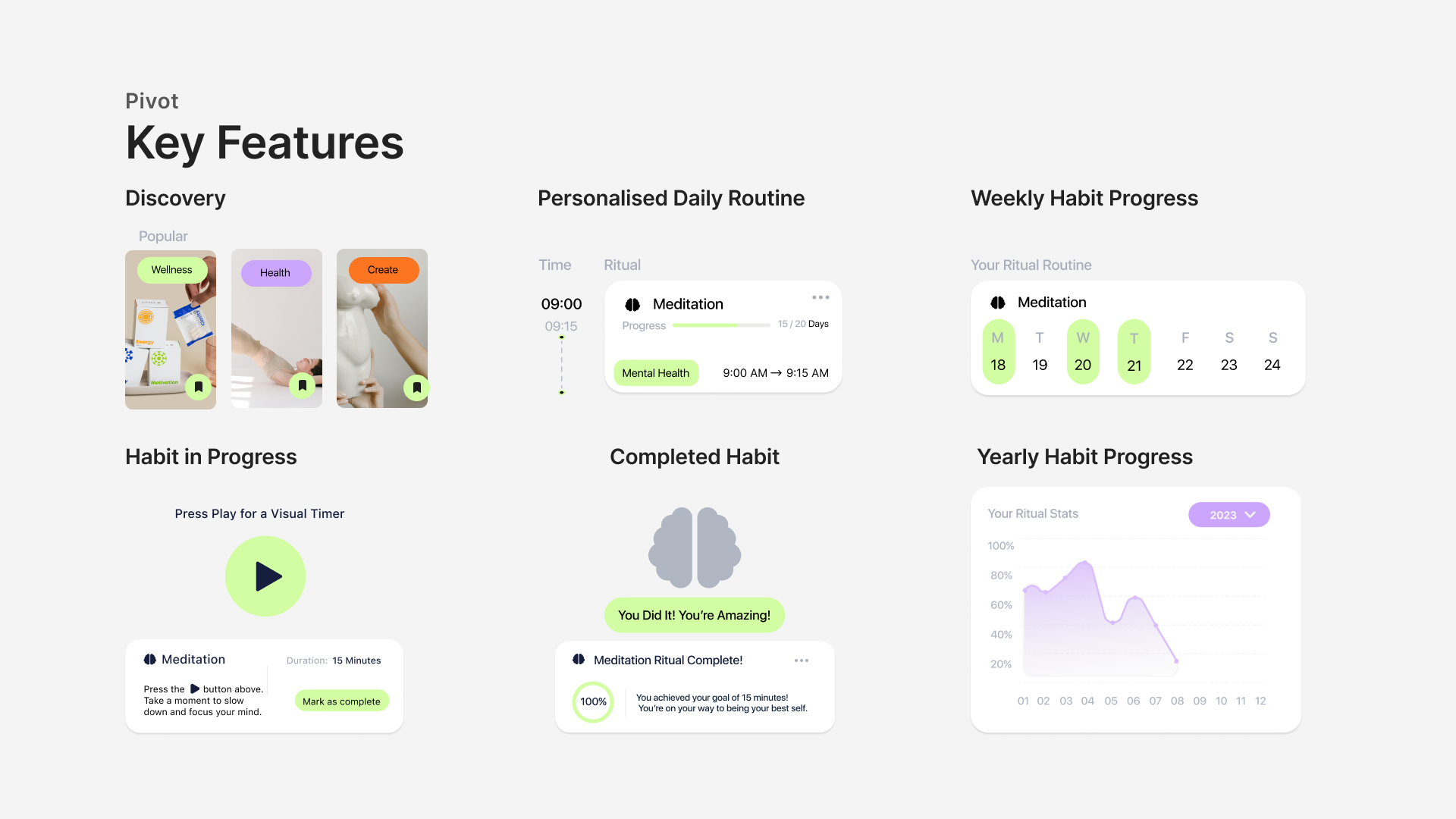
Figure 7.0 ‘Pivot Features’
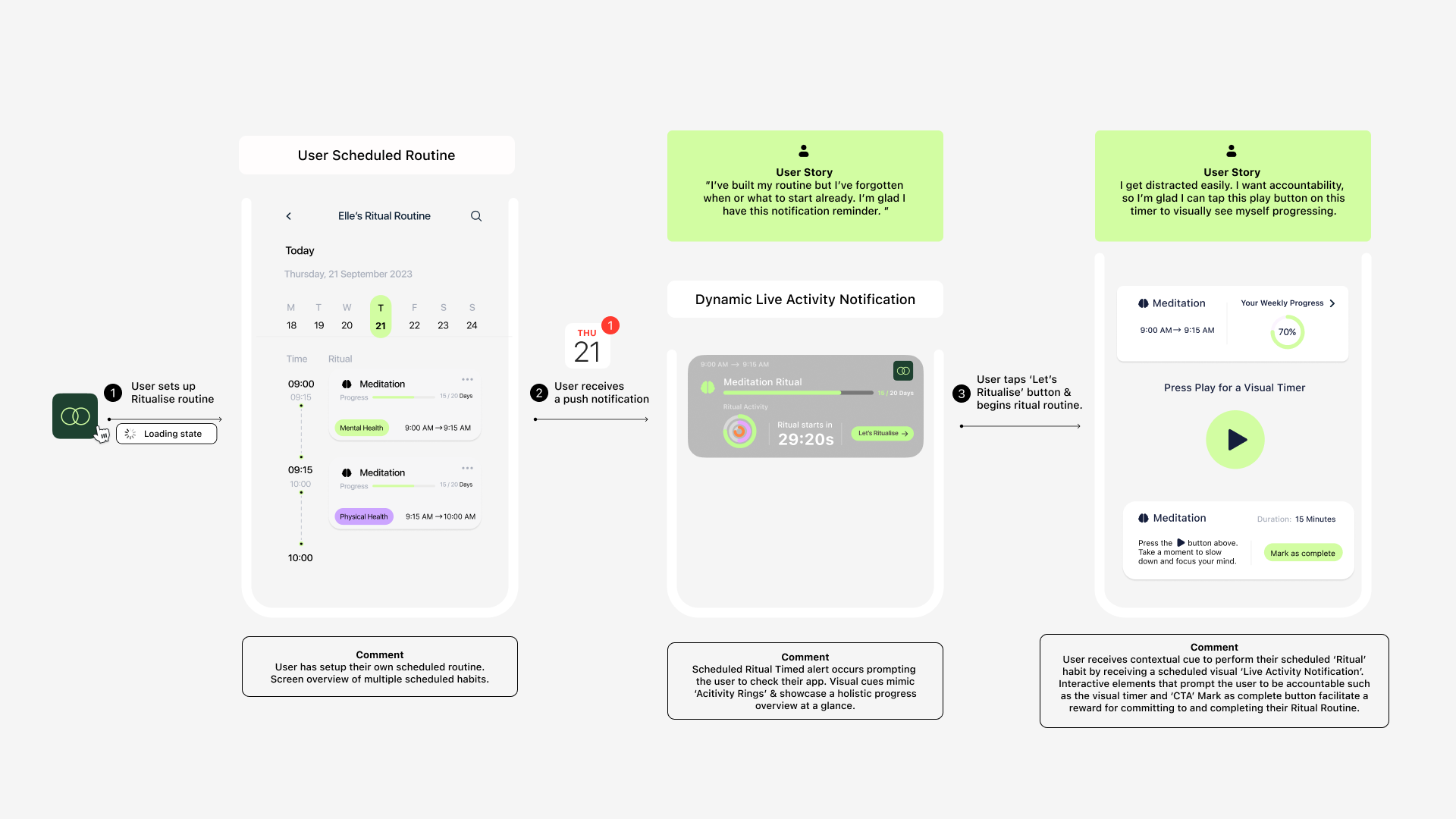
Figure 8.0 ‘User Flow – Live Activity Notification’ Diagram
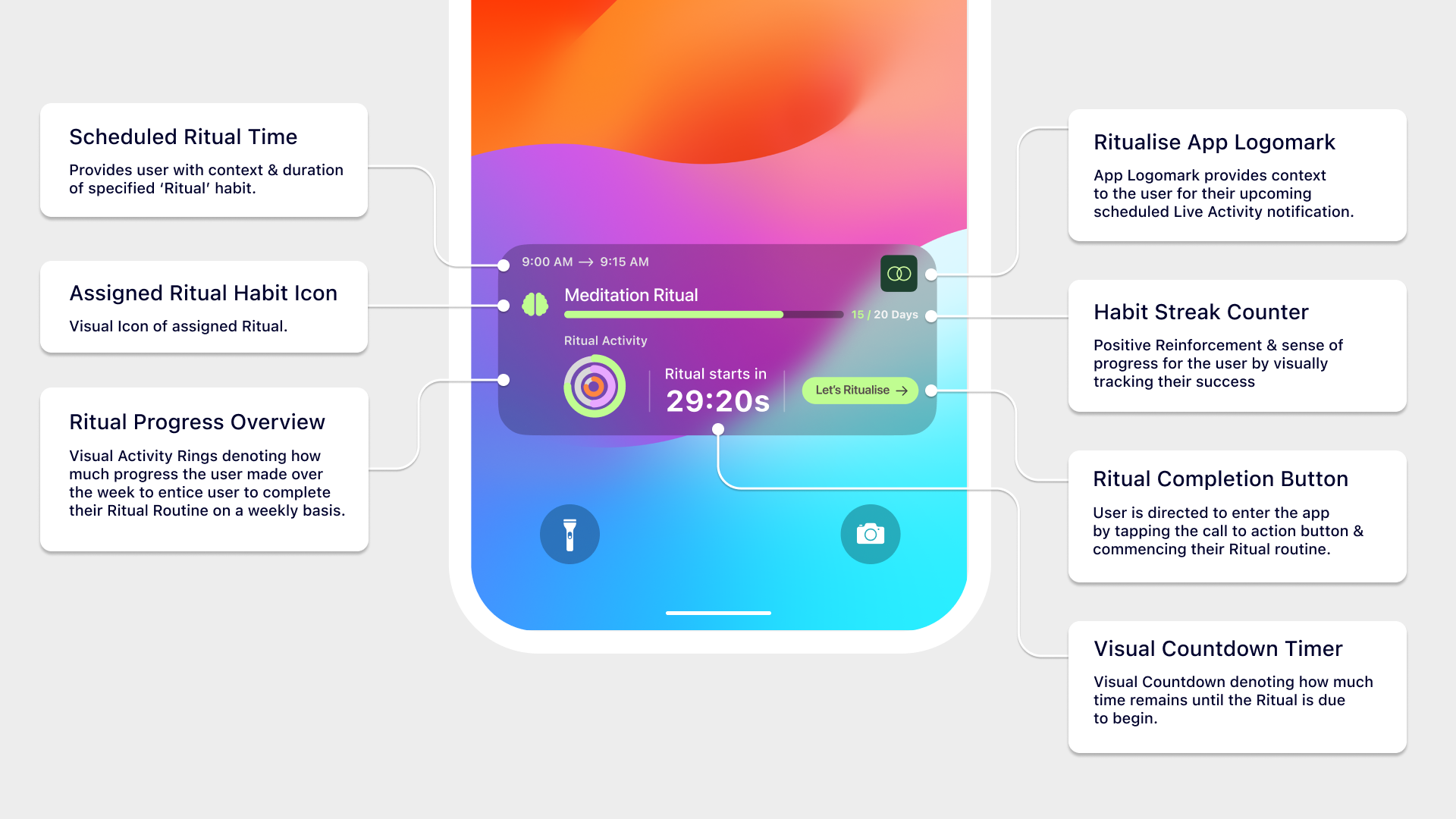
Figure 9.0 ‘Live Activity Notification’ Diagram Analysis

The Discover screen, targeting the decision
phase of habit formation, lets users browse ‘Popular’ categories to simplify their routine customisation and reduce cognitive overload.
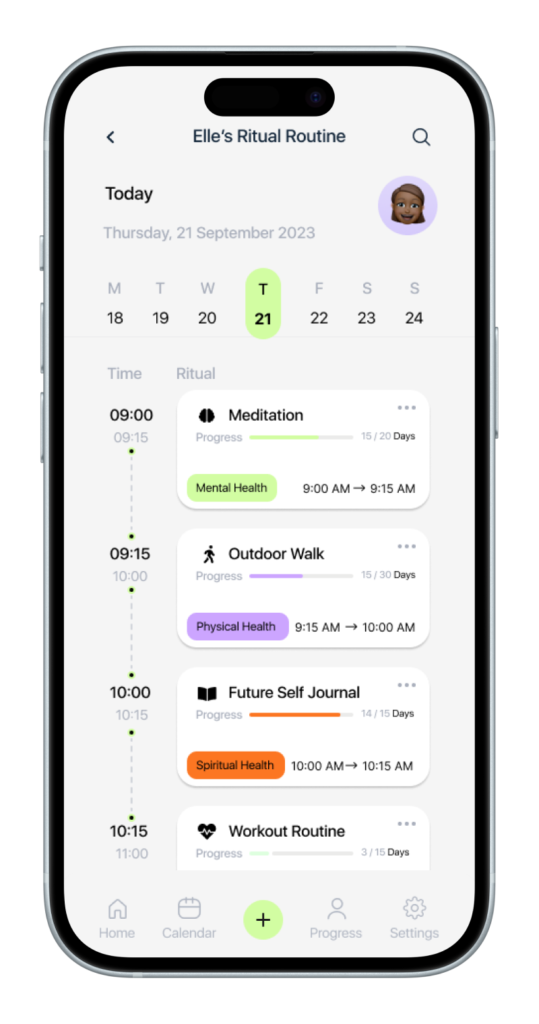
The customised ‘Ritual Routine’ screen offers a daily snapshot of users’ scheduled habits. A progress bar encourages check-ins, while color-coding streamlines habit identification.

Users can visually monitor their habit consistency through color-coded progress circles, which also provide positive feedback for maintained streaks.
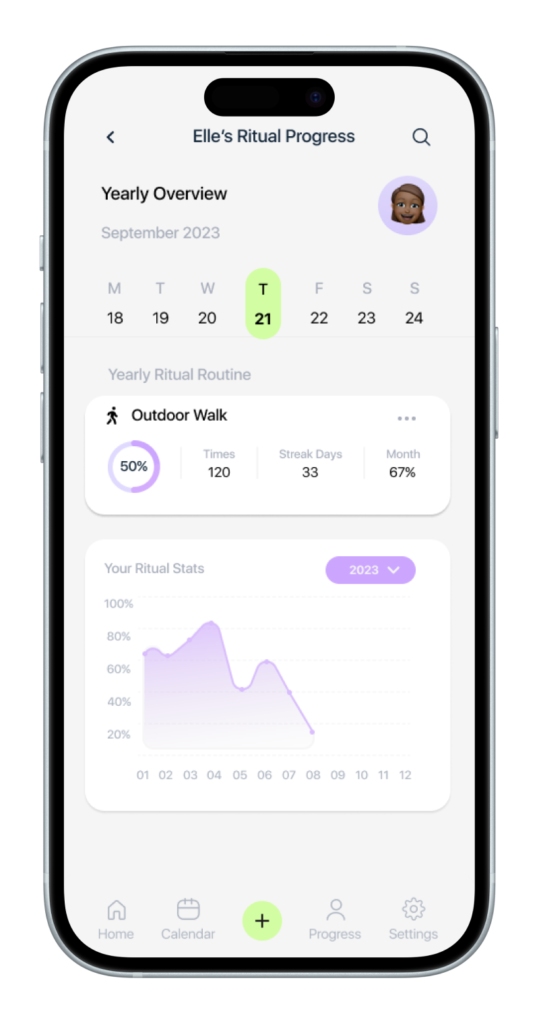
Users can view yearly personalised graphs to identify and correlate productive months, helping pinpoint factors that influence habit completion success.

Users can opt to receive the ‘Live Activity’ notification, which directs them to the ‘Habit in Progress’ screen. This displays their progress, scheduled time, and includes a ‘Visual Timer’ for accountability. Users can see the habit’s duration and have an option to mark it complete.
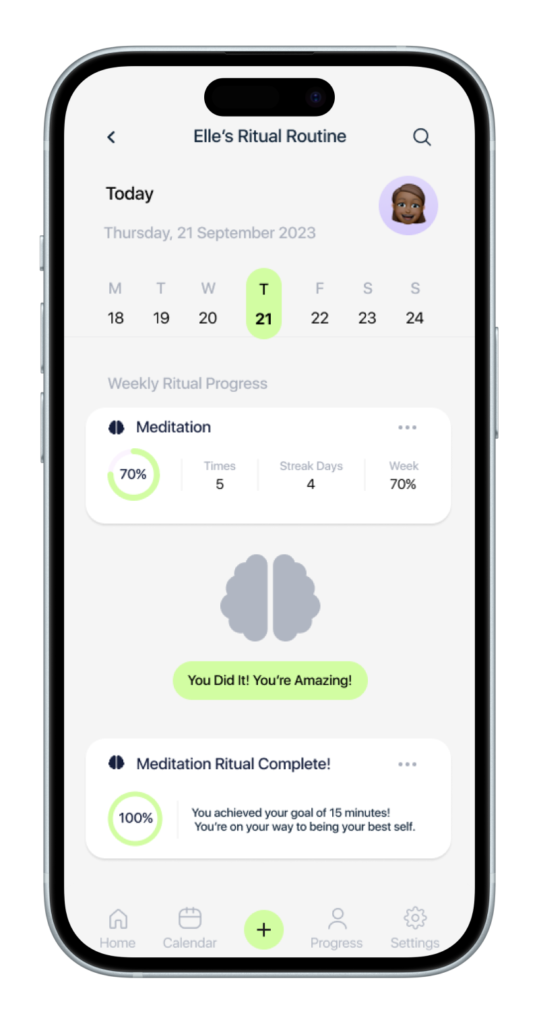
Once users complete their selected habit, they’re presented with a written affirmation and a visual overview showing their progress.
This project highlighted the significance of user-centered research and responsive design in creating effective apps. It emphasised addressing complexity for a user-friendly experience. Developing habits incrementally, even by 1% daily, can result in a remarkable 37x improvement over 1 year. Further development of this project would involve refining the design through usability testing and iteration to ensure user needs are met optimally with a focus on accessibility.